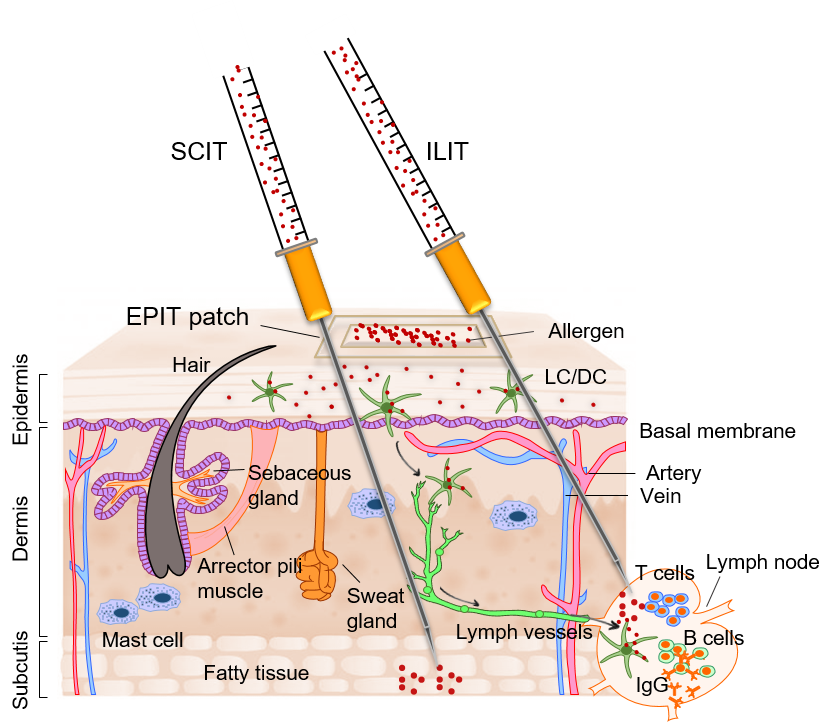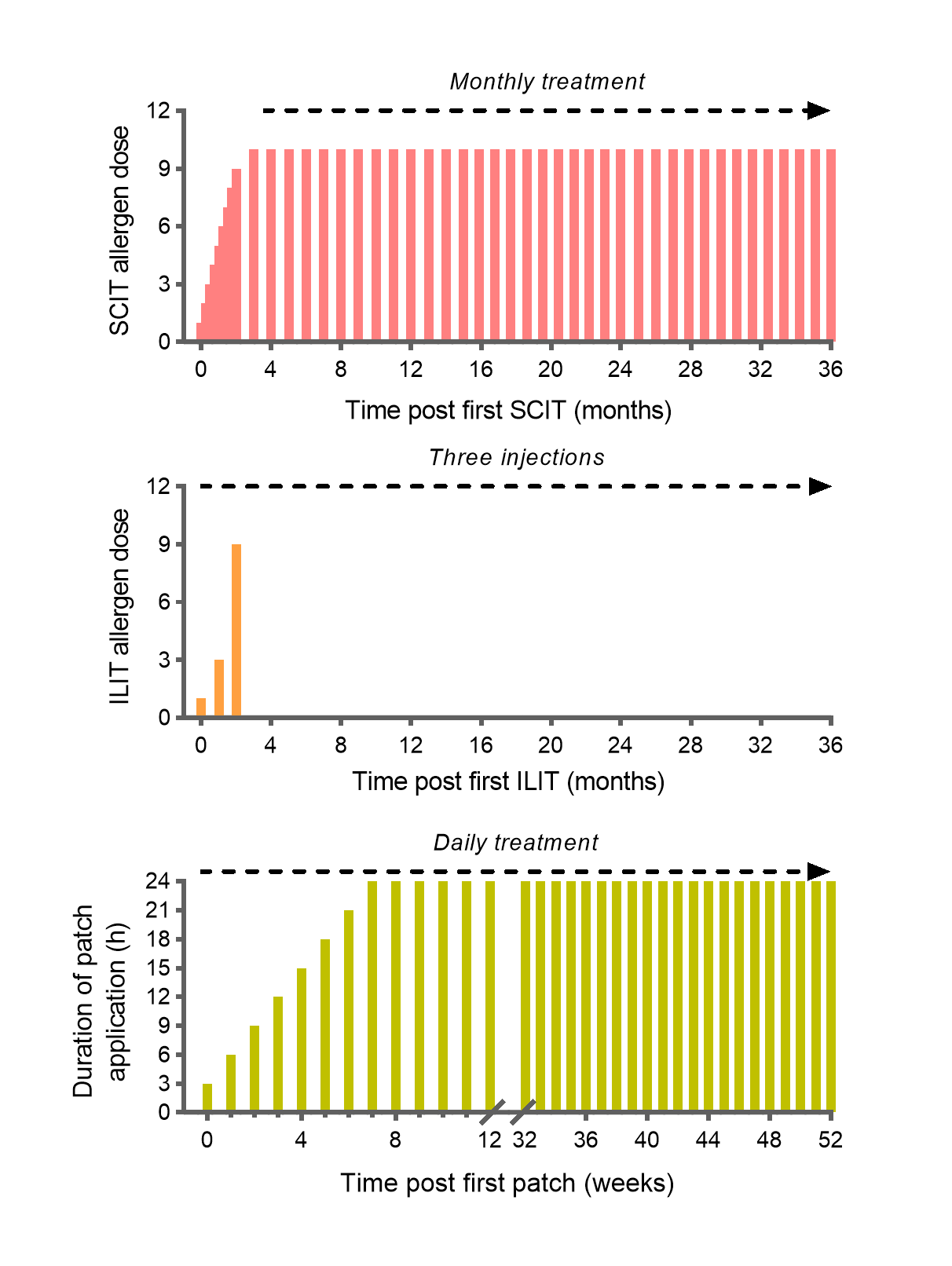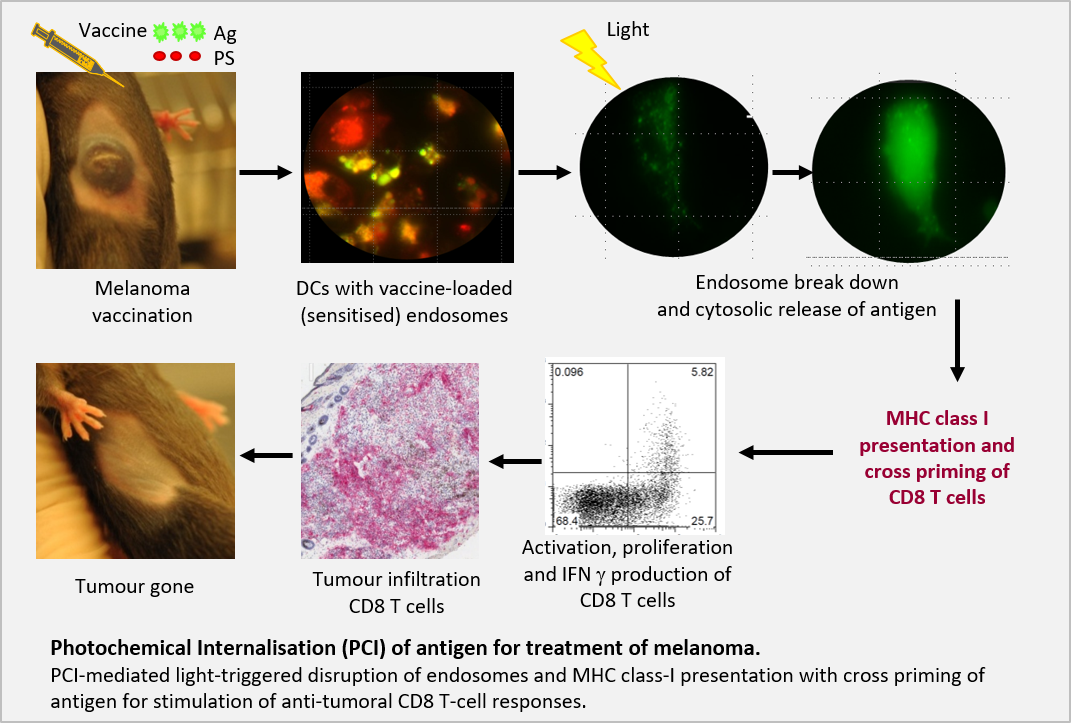Research activities in Immunotherapy of the Department of Dermatology
Research groups
Antonia Gabriel
Main field of research
Our main research area is translating immunology of chronic diseases or hyperreactivities such as allergies into new cutting-edge therapeutic vaccines. Our virus-like particle (VLP)-based therapeutic vaccines target key molecules involved in disease pathology and, in contrast to other biologicals, are an inexpensive and effective way of treating chronic disorders. Thus, advanced technology can become available even to our companion animals. One of our main interests are skin-related problems in horses. The most common chronic allergic dermatitis in horses is caused by insect bites. Insect-bite hypersensitivity (IBH)-affected horses suffer from pruritic skin lesions, caused by type-I/type-IVb allergic reactions accompanied by prominent eosinophilic infiltration into the skin. We study the interplay of underlying allergic reactions in early and chronic stages of disease. IBH in horses shares common features with human asthma. Thus, we believe understanding the molecular mechanisms in such allergic reactions can be translated to other species including humans allowing to improving treatment modalities in the future.
Selected references
- Active vaccination against Interleukin-5 as long-term treatment for insect bite hypersensitivity in horses. Allergy 2019, 74:572-582.
- Treating insect-bite hypersensitivity in horses with active vaccination against IL-5. J Allergy Clin Immunol 2018, 142:1194-1205.
- Inflammasome activation and IL-1b target IL-1a for secretion as opposed to surface expression. Proc Natl Acad Sci U S A, 2011,108:18055-60.
- Jonsdottir S, Fettelschoss V, Olomski F, Talker SC, Mirkovitch J, Rhiner T, Birkmann K, Thoms F, Wagner B, Bachmann MF, Kündig TM, Marti E, Fettelschoss-Gabriel A. Safety Profile of a Virus-Like Particle-Based Vaccine Targeting Self-Protein Interleukin-5 in Horses. Vaccines (Basel). 2020 May 9;8(2):213. doi: 10.3390/vaccines8020213. PMID: 32397549; PMCID: PMC7349629.
- Olomski F, Fettelschoss V, Jonsdottir S, Birkmann K, Thoms F, Marti E, Bachmann MF, Kündig TM, Fettelschoss-Gabriel A. Interleukin 31 in insect bite hypersensitivity-Alleviating clinical symptoms by active vaccination against itch. Allergy. 2020 Apr;75(4):862-871. doi: 10.1111/all.14145. Epub 2020 Feb 6. PMID: 31816097; PMCID: PMC7217000.
Group members
Juwela Lam, Msc, Research Associate
Alexander Chemitzer, MSc, Research associate
Jefferson Brito de Souza, technical assistant
Katharina Birkmann, DVM
Tanya Rhiner, DVM candidate
Fabia Canonica, PhD, Project manager
Stanislave Pantelyushin, PhD, Project manager
Fadi Jebbawi, PhD, Project manager
Thomas Kündig & Pål Johansen
Main fields of research
Our research focused on immunotherapy of allergies, infections, and cancer. The research is very much driven by real clinical needs, and to address scientific and clinical questions, we apply experimental research methods in vitro and in vivo and we perform clinical studies in humans.


In allergy, we aim to improve efficacy and safety of allergen immunotherapy (AIT) by using novel methods or technologies. For instance, we were the first to show that administration of allergens into lymph nodes (ILIT = intralymphatic immunotherapy) allowed shortening immunotherapy from three years of 50-60 injection to merely three injections during two months. Our lab was also instrumental in developing epicutaneous immunotherapy (EPIT), a non-invasive and patient friendly method that uses allergen patches for AIT delivery. We have also been strongly involved in the development of new adjuvants or particulate delivery systems for AIT. More recently, we are also investigating the potential of allergen-specific monoclonal antibodies for use in allergen immunotherapy. Alongside the AIT development, we are also studying basic immunological mechanisms underlying successful AIT, and we are constantly developing or improving methods for testing AIT pre-clinically in vitro and in vivo, e.g. in mouse models of allergy.
In cancer, we have lately been developing a new method of cancer vaccination by combining vaccines and photodynamic therapy (PDT), a method that enables the induction of cytotoxic and tumour-specific T-cell responses. Intradermal injections of tumour antigens and photosensitisers leads to their uptake in skin antigen-presenting cells, e.g. dendritic cells. Subsequent light administration enables cytosolic release of antigen from endosomes and subsequent MHC class-I-restricted antigen processing for stimulation of cytotoxic CD8 T cells.
Many of our research projects are performed in collaboration with biotech companies and aim to facilitate the translation of new technologies.
Group members
Gary Jennings, PhD
Senta Walton, PhD
Kasia Radomska, PhD
Mehmet Sahin, PhD
Grace Gordon, Research associate
Ying Men-Wäckerle, PhD
Marta Paolucci, PhD student
Zuzanna Kotkowska, PhD student
Marta Paolucci, PhD student
Lara Sosic, MD-PhD student
Frida Nilsson, PhD student
Stephan Flory, Pract. med., doctoral candidate
Yasmin Adlany, MD student
Emma Widmer, Pract. med., doctoral candidate
Agathe Duda, Research associate
Steve Pascolo
Publications
Group member
Andreas Reichmut, PhD
Mark Mellett, PD Dr., Oberassistant
Natalia T. Jarzebska , PhD student
Shahab Abdolnejad Mamaghani, PhD student
Julia Frei, MSc, Research associate
Conrad Wyss, MSc, Research associate


